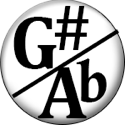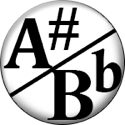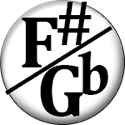Pentatonic Scales Sequences, Part 1

Hi. This is Hub Guitar.
We're going to run through some sequences that can really help you get the pentatonic scale under your fingers. I am going to demonstrate using the minor pentatonic, but you should definitely apply this to all five patterns.
We're going to use different intervals to play our way through the scale.
The first interval is mostly fourths, except for a third between C and E.
Now we'll do mostly fifths, except there will be a sixth between E and C.
Now we'll do mostly sevenths, except for a sixth between C and A.
Once you've got these patterns down, apply them to all five fingerings of the pentatonic scale.
A melodic sequence is a fragment of a scale that, when repeated, forms a continuous pattern. Imagine that you are standing halfway up a ladder, and you’ve decided to create a pattern by stepping up and down the rungs. There are almost unlimited possibilities, but maybe to start, you’ll make a pattern going up two steps and down one step, up two and then down once again. While there seem to be many possibilities of combinations, eventually your limitations will present themselves. For instance, you probably can’t climb five steps at once. Therefore, some sequences will be more practical than others.
There are numerous sequences made from simple patterns. It is even possible to combine them and make elaborate sequences, though this mathematical approach is less common.
Let’s begin by exploring the various possibilities of melodic sequences using the familiar root position minor pentatonic “box”. Play the scale first as a warm-up.
A minor pentatonic scale
Moving By Interval
Our first pattern will move up the scale by a given intervalAn interval refers to any melodic distance between any two pitches..
This type of pattern is exactly like the ascending scale, except that each note is followed by another scale note, a given interval above.
Fourths
The most common way to apply this principle to the pentatonic scale is to play the scale using every-other note. This sequence results in mostly fourths. You play the first note, then the note a fourth up; then you play the second note, and a fourth up, and so on. (Note: the fourth above C is not in the scale, so you’ll play a third instead.)
For each pattern, play the ascending and also work out how to play it descending.

Fifths
Another possibility is to play the scale using fifths. Because of the occasional missing fifth, you will substitute a sixth occasionally, as from “E” to “C”.

Sevenths
Another approach is to play the scale using sevenths. Here, there will be more asymmetry resulting in sixths; from C to A, for example.

Key Tasks
- Apply the patterns to all five pentatonic scale fingerings.
- Practicing these patterns with a metronome is critical.
- Once mastered, try using these patterns to add excitement to your improvisation.
- When you’re ready, move on to pentatonic scale sequences, part 2: beat groupings.
 As the creator of Hub Guitar, Grey has compiled hundreds of guitar lessons, written several books, and filmed hundreds of video lessons. He teaches private lessons in his Boston studio, as well as via video chat through TakeLessons.
As the creator of Hub Guitar, Grey has compiled hundreds of guitar lessons, written several books, and filmed hundreds of video lessons. He teaches private lessons in his Boston studio, as well as via video chat through TakeLessons.











